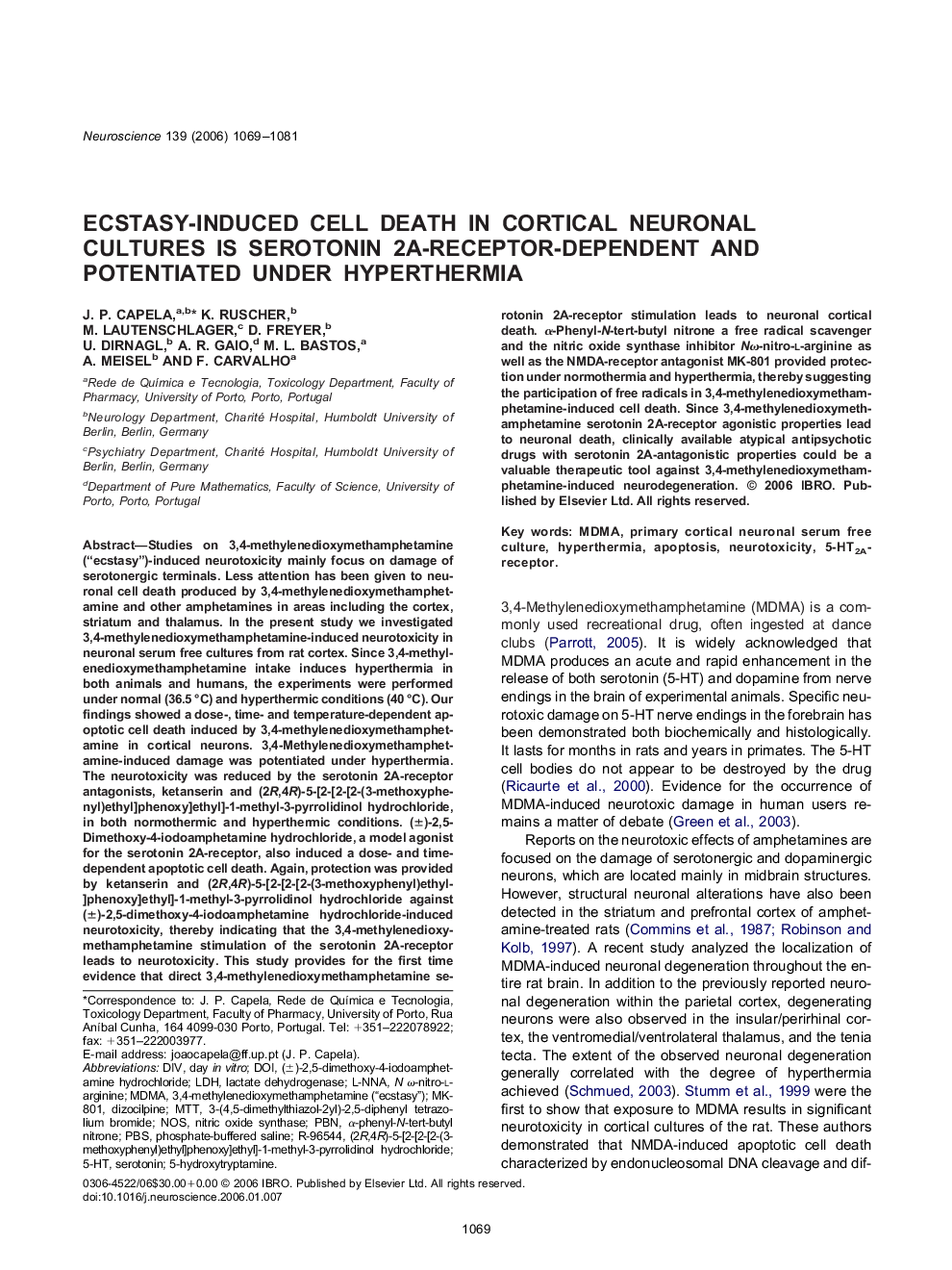| کد مقاله | کد نشریه | سال انتشار | مقاله انگلیسی | نسخه تمام متن |
|---|---|---|---|---|
| 4341935 | 1295850 | 2006 | 13 صفحه PDF | دانلود رایگان |

Studies on 3,4-methylenedioxymethamphetamine (“ecstasy”)-induced neurotoxicity mainly focus on damage of serotonergic terminals. Less attention has been given to neuronal cell death produced by 3,4-methylenedioxymethamphetamine and other amphetamines in areas including the cortex, striatum and thalamus. In the present study we investigated 3,4-methylenedioxymethamphetamine-induced neurotoxicity in neuronal serum free cultures from rat cortex. Since 3,4-methylenedioxymethamphetamine intake induces hyperthermia in both animals and humans, the experiments were performed under normal (36.5 °C) and hyperthermic conditions (40 °C). Our findings showed a dose-, time- and temperature-dependent apoptotic cell death induced by 3,4-methylenedioxymethamphetamine in cortical neurons. 3,4-Methylenedioxymethamphetamine-induced damage was potentiated under hyperthermia. The neurotoxicity was reduced by the serotonin 2A-receptor antagonists, ketanserin and (2R,4R)-5-[2-[2-[2-(3-methoxyphenyl)ethyl]phenoxy]ethyl]-1-methyl-3-pyrrolidinol hydrochloride, in both normothermic and hyperthermic conditions. (±)-2,5-Dimethoxy-4-iodoamphetamine hydrochloride, a model agonist for the serotonin 2A-receptor, also induced a dose- and time-dependent apoptotic cell death. Again, protection was provided by ketanserin and (2R,4R)-5-[2-[2-[2-(3-methoxyphenyl)ethyl]phenoxy]ethyl]-1-methyl-3-pyrrolidinol hydrochloride against (±)-2,5-dimethoxy-4-iodoamphetamine hydrochloride-induced neurotoxicity, thereby indicating that the 3,4-methylenedioxymethamphetamine stimulation of the serotonin 2A-receptor leads to neurotoxicity. This study provides for the first time evidence that direct 3,4-methylenedioxymethamphetamine serotonin 2A-receptor stimulation leads to neuronal cortical death. α-Phenyl-N-tert-butyl nitrone a free radical scavenger and the nitric oxide synthase inhibitor Nω-nitro-l-arginine as well as the NMDA-receptor antagonist MK-801 provided protection under normothermia and hyperthermia, thereby suggesting the participation of free radicals in 3,4-methylenedioxymethamphetamine-induced cell death. Since 3,4-methylenedioxymethamphetamine serotonin 2A-receptor agonistic properties lead to neuronal death, clinically available atypical antipsychotic drugs with serotonin 2A-antagonistic properties could be a valuable therapeutic tool against 3,4-methylenedioxymethamphetamine-induced neurodegeneration.
Journal: Neuroscience - Volume 139, Issue 3, 2006, Pages 1069–1081